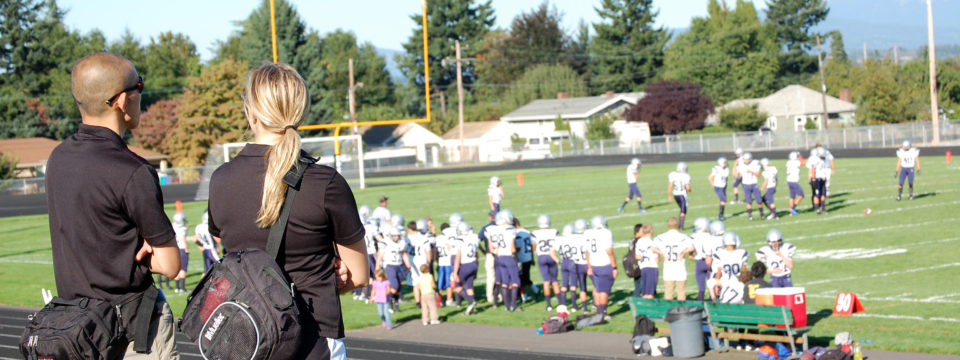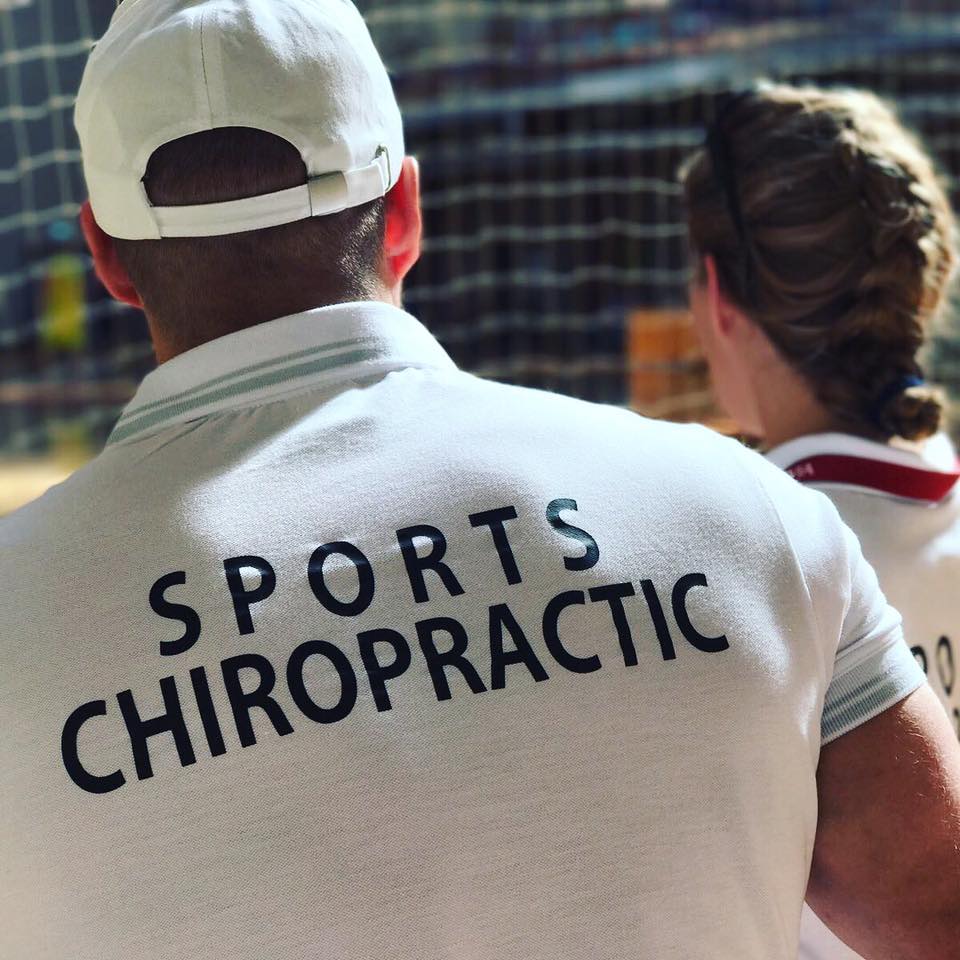By: Bill Moreau, DC, DACBSP, FACSM
Sports and chiropractic care have enjoyed a long and mutually supportive relationship. It is now commonplace for doctors of chiropractic to be involved in all levels of sport care for athletes, from the recreation leagues to the Olympics, Paralympics, NFL and other professional sports leagues, and beyond. Regardless of the level of involvement, there are growing opportunities for chiropractic physicians to serve in the sporting world.
The highly visible world of sport is a great proving ground to demonstrate the safe, effective and efficient delivery of chiropractic care, in both preventative and interventional modes. Athletes of all levels are looking to reach their personal bests in sport. An athlete’s sustained and healthy career can be a predictor of their success. In order to reach that level of success, mental and physical wellness need to be top priorities.
Hear from Dr. Bill Moreau, about the value of a degree specialization in sports medicine.
HOW TO GET INVOLVED IN SPORTS CARE
A key to identifying the pathway to engage in sport care of athletes is for the doctor of chiropractic to identify opportunities that are unique to their particular circumstances. Many doctors are currently in the sporting environment, and many more want to get in the game. It makes sense to expect that the doctor needs to enhance their clinical skills and sports-related acumen as they begin to offer healthcare services outside of their clinic or office setting. For most doctors, their area of highest comfort and clinical confidence is when they are working in their own offices. In the office setting, doctors of chiropractic are in positions of authority where the final opinion is typically not questioned and all the staff, tools and equipment they use to help their patients is right at hand.
In sport care, the doctor needs to understand the three A’s of sport: ability, availability, affability. All chiropractic physicians care for athletes. When the care is offered outside the clinic or office setting, the change in location requires the doctors to see the entire setting before engaging in care. It is important to recognize there are other well trained and talented professionals that also want to help the athletes stay healthy. Developing supportive partnerships within the health care team is necessary to deliver athlete-patient centric care.

OFFICE CARE VERSUS EVENT CARE
There are important differences between office and event care. One of the key differences is related to the clinical presentation of the patient. Chiropractic physicians are taught to recognize clinical conditions by identifying the signs and symptoms of the presenting patient and then match these findings to a diagnosis. The diagnosis is formulated based on the doctor’s education and clinical experience, and serves as a guide to implement the best course of care for the ill or injured athlete. The key difference is the time to presentation. In the clinical setting, the athlete’s injury will have had time to develop the classic telltale signs and symptoms we are trained to identify. At an event, you see an athlete moments after the injury. The injury is most likely still unwinding to show the clinical picture whereby the clinician can identify the diagnosis.
Serial (repeat) examinations are a cornerstone to the successful management of injuries and illness at an athletic event. For example, the current standard of care for the evaluation and management of an individual with sports related concussion is serial examinations every five (5) minutes.1 The final diagnosis should not be made until the patient’s clinical presentation is stable and no longer changing.
WHERE TO OBTAIN ADDITIONAL EDUCATION, TRAINING AND CERTIFICATION
Depending upon the role the chiropractic physician fills on the sports medicine team, additional education helps best prepare the doctor to fulfill their role. In the United States, the American Chiropractic Board of Sports Physicians is the recognized certification organization for the chiropractic physician who wishes to obtain a sports medicine certificate of additional qualification.2 For those who work outside the United States, the International Federation of Sports Chiropractic (FICS) is the recognized certification organization.3 Doctors working domestically or on the international level may also consider formal education in a master’s degree program related to sport or sports medicine to help prepare them for success in the sporting arena.
PREPARTICIPATION EXAMINATIONS AND SPORTS-RELATED CONCUSSION EVALUATIONS
In addition to the numerous opportunities, there are also barriers to the chiropractic physician wishing to engage in the full spectrum of sports medicine. The two most controversial areas pertain to the ability to perform preparticipation examinations (PPE), sometimes called the periodic examination, and the evaluation and management of sports-related concussion.
About one half of the states allow the chiropractic physician to perform the PPE while other states do not. There is a lack of consensus within and outside the profession regarding this issue. Typical areas of resistance are centered on the cardiac examination. The critics state they are not convinced that a chiropractic physician can detect abnormal heart sounds. While there is not a single study to support this position, there are studies that demonstrate that family practitioners, academic internists, and general internists all demonstrate a low proficiency of no more than 40% in recognizing basic heart murmurs. Cardiologists, who only represent 5% of practicing physicians, are the only group that routinely recognizes most abnormal heart murmurs.4
The AHA twelve-point cardiac examination has been suggested as the standard of care for the PPE. At the discretion of the examining clinician, a positive response in any one or more of the 12 items may be enough to cause a referral to a cardiologist for cardiovascular evaluation. Parental verification of the responses is regarded as essential for minor students in middle or high school students, because young patients are notoriously poor historians.5 The historical and physical examination described in those circumstances falls well within the scope and skills of a chiropractic physician. The point is the abnormal heart sound does not need to be named by the primary point of contact. All athletes with an abnormal heart sound must be evaluated by a cardiologist to identify the cause of the murmur and the safety for that individual to participate in sporting activities.
Regarding sport-related concussion, it would be very surprising, after the plethora of current media coverage, that any health care provider would ever consider returning an athlete who possibly sustained a concussion to play. Each athlete must be protected from continued participation while suffering from any symptom or sign of concussion. Advising against return to play based on clinical findings is well within the scope of skills for chiropractic physicians.
There is a growing and continued need for chiropractic physicians to evaluate and manage sports injuries in all patient populations. It makes sense that all providers would work to know what they need to know before the sport injury patient presents before them.

References:
- McCrory, Paul, Willem Meeuwisse, Jiří Dvorak, Mark Aubry, Julian Bailes, Steven Broglio, Robert C Cantu, et al. “Consensus Statement on Concussion in Sport—the 5 th International Conference on Concussion in Sport Held in Berlin, October 2016.” British Journal of Sports Medicine, April 26, 2017, bjsports-2017-097699. https://doi.org/10.1136/bjsports-2017-097699.
- Moreau, William J. “The American Chiropractic Board of Sports Physicians Supports the Journal of Chiropractic Medicine.” Journal of Chiropractic Medicine 6, no. 3 (2007): 85–86. https://doi.org/10.1016/j.jcme.2007.06.002.
- Latest FICS News. (n.d.). Retrieved February 4, 2020, from https://fics.sport/
- Barrett, Michael, Bilal Ayub, and Matthew Martinez. “Cardiac Auscultation in Sports Medicine: Strategies to Improve Clinical Care.” Current Sports Medicine Reports 11, no. 2 (April 2012): 78–84. https://doi.org/10.1249/JSR.0b013e318249c0ff.
- Maron, Barry J., Paul D. Thompson, Michael J. Ackerman, Gary Balady, Stuart Berger, David Cohen, Robert Dimeff, et al. “Recommendations and Considerations Related to Preparticipation Screening for Cardiovascular Abnormalities in Competitive Athletes: 2007 Update: A Scientific Statement From the American Heart Association Council on Nutrition, Physical Activity, and Metabolism: Endorsed by the American College of Cardiology Foundation.” Circulation 115, no. 12 (March 27, 2007): 1643–55. https://doi.org/10.1161/CIRCULATIONAHA.107.181423.
